Have you ever seen (or created) a chart with your students that looks something like this?
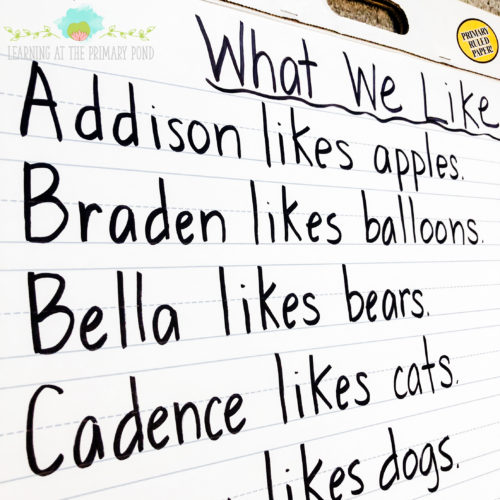
This is an example of a “predictable chart.” It’s predictable because the sentence frame is the same in each sentence (in this case, it’s just the word “likes”).
Why Use Predictable Charts?
The main reason why I love creating predictable charts is because it gives students the experience of saying something out loud, writing it down, and then reading it back.
This helps them understand what reading and writing are all about – even if they can’t read and write yet!
Predictable charts are also awesome for teaching:
- Print concepts (i.e. writing left to right, leaving spaces between words, concept of a word / sentence, etc.)
- Alphabet letters
- High frequency words
- And more!
The class works together to create the chart, so the kids enjoy the experience and take ownership of the chart. After the chart is created, there’s SO many things you can do with it – including create center activities from it!
How Do You Create a Predictable Chart?
To create a predictable chart, choose a sentence frame to use over and over.
You might incorporate students’ names into the sentence frame, like the example in the photo at the beginning of this post.
Here are a few other examples of predictable charts that include student names:
(Name) can (action word). – Nina can jump. Michael can run.
(Name) is (number) years old. – Nina is 5 years old. Michael is 6 years old.
(Name) goes to (place). – Nina goes to the library. Michael goes to the toy store.
(Name) likes to eat (food). – Nina likes to eat pizza. Michael likes to eat tacos.
There are so many options!
Here are a few other topics that don’t involve students’ names (these can be quicker to create because you don’t have to have a sentence for every child in your class:
We see _________. – We see a tree. We see the playground.
We went _________. We went on a bus. We went to the farm.
Once you’ve chosen your topic, write a title for the chart and share it with the class.
If you’re using students’ names in the chart, call on a child, help him/her come up with a sentence, and then have the whole class repeat the sentence together.
Then, write the sentence on the chart as the class slowly repeats it for you. Read the sentence with students once more. And then move onto the next child’s sentence!
(Plan for a break halfway through unless you have a very small class!)
If your chart does not involve students’ names, introduce the sentence frame. Then, have students raise their hands to suggest sentences for the chart. Record each sentence (students should be repeating each sentence aloud twice) and then read it with students.
With any type of chart, you’ll want to:
- Keep the writing process relatively quick – you might point out a capital letter or a high frequency word, but you’re not teaching anything in-depth unless your chart is going to be VERY short!
- Reread the entire chart chorally (with students) when the chart is complete.
- Save the chart for other follow-up activities!
What Can You Do With a Finished Chart?
Once you’ve created the chart, you can use it for so many other activities! You might…
- Have students hunt for specific words or letters in the chart
- Highlight parts of a sentence, like capital letters and periods
- Turn each sentence into a page of a class book and have each child illustrate a page (place it in the classroom library once it’s finished)
- Have students practice rereading the chart with a pointer (easy center activity!)
- Have students match pictures to each sentence
You could even copy the chart over onto sentence strips and cut apart the words. Students can match pictures or alphabet letters to the chart. You can mix up the words in a sentence and have students put the sentence back in order.

The possibilities are endless, and you can even create entire phonics lessons from a chart!
Speaking of phonics…do you teach Kindergarten and need a phonics freebie? I’ve got a yearlong guide to teaching phonics in Kindergarten that includes a scope and sequence! Grab it for free here:
How do you use predictable charts in the classroom? Leave a comment below!
You can also pin this post to save it for predictable chart ideas in the future!

Happy teaching!


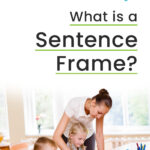
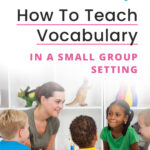
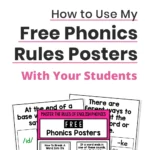
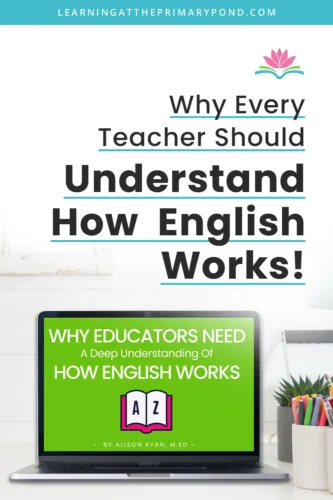
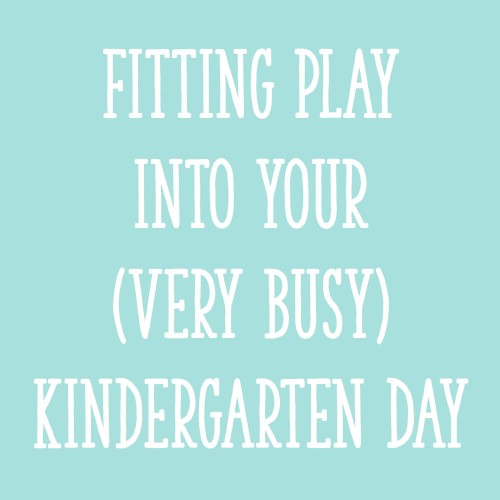
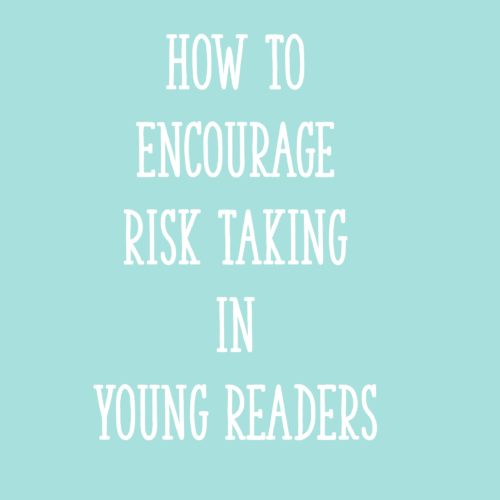






I love predictable charts! My students and I enjoy turning them into class books! After we create the chart, I type each students’ sentence and give it to them. I type multiple sentences on one sheet of paper and just give them the strip with their sentence on it. The students cut out each word, glue it down on construction paper, and read and illustrate it. You can differentiate the activity by mixing up the word order of certain students’ sentences.
I love the class book idea, Lauren! And I also like the idea of mixing up the word order. Thanks for reading and sharing!!
Alison
I love this!